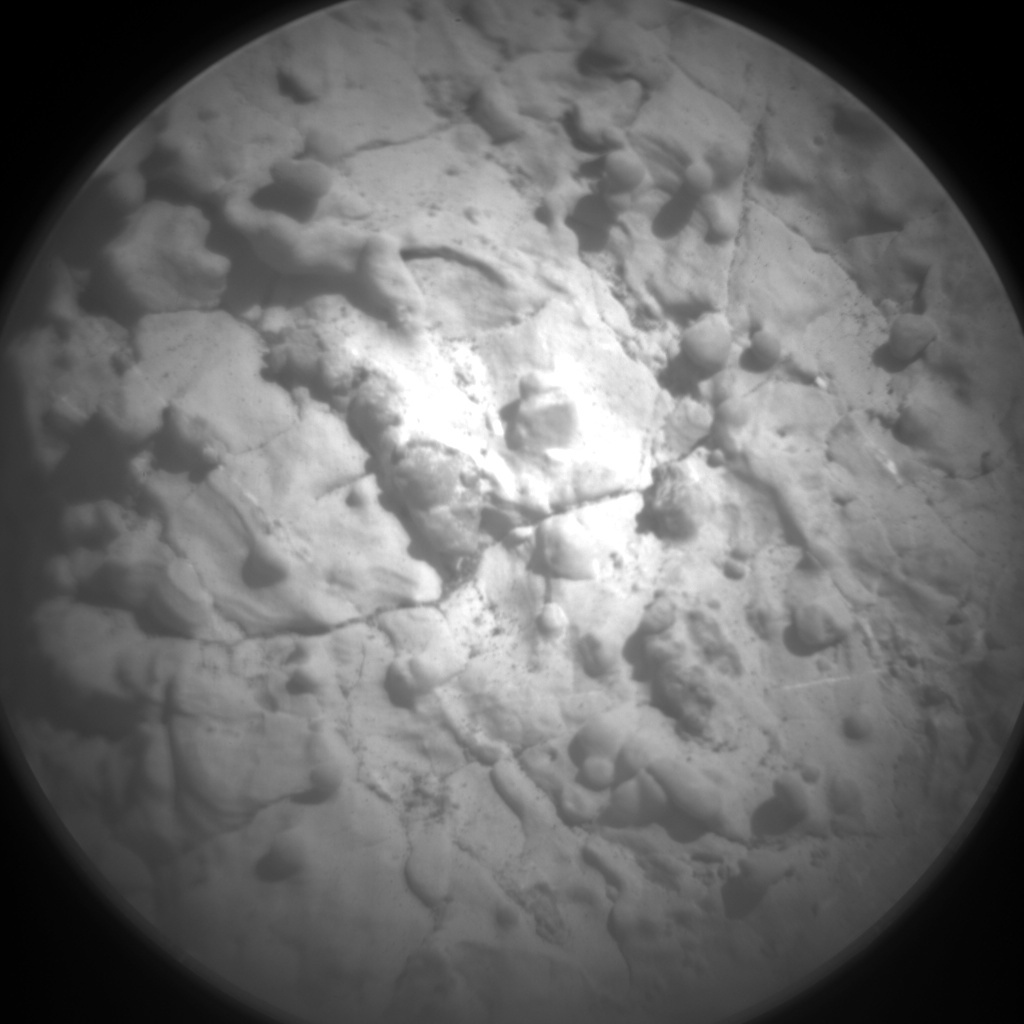2 min read

In Germany, children polish their shoes in the evening of the 5th of December to find them filled with treats of the season on the morning of Saint Nicholas day. I think, Curiosity must have polished her wheels nicely for Saint Nicholas day … and we got treated here on Earth! The rich workspace included bedrock, pebbly areas and a brighter float rock of a kind which has been observed frequently in the vicinity. Thus, lots of variety – and a three-sol plan to fill.
Today’s plan made good use of the rock variety in the workspace. APXS will investigate two targets, “Scotnish” is a target which will be measured overnight after DRT of the area. “Gretna Green” is a touch and go target measured in standoff mode, because it is a small brighter float rock. It will be interesting to see how the difference in colour – mainly albedo – translates to chemistry. MAHLI is documenting the same rocks as APXS, and in addition will image “Smiddyhill” in dogs eye mode to get up close with the sedimentary textures. The scientists back on Earth are eagerly waiting to have a look at those images to understand the depositional conditions and also to correlate the rocks between the current investigations area at Western Butte.
ChemCam is busy with three targets. First, it is also investigating Gretna Green, and then adds a bedrock target named “Skaill” and a pebbly target called “Stoneypath” to its repertoire.
Mastcam adds to the feast with several large mosaics, looking at the pediment ahead, an area close to the rover for sand ripple studies and a target called “White Hills” for more sedimentary studies. There are also two multispectral investigations and the documentation of the ChemCam targets in Mastcam’s plan.
This will keep Curiosity busy over the weekend, and on Monday we will study those images and data to correlate them with previous investigations, and looking forward to the top of the butte. Talking of looking forward: The planned drive is designed to get a block of rock into the workspace, which the planning team anticipates could allow us correlations not only around Western Butte, but also to Central Butte. Happy weekend, Curiosity!
Written by Susanne Schwenzer, Planetary Geologist at The Open University







